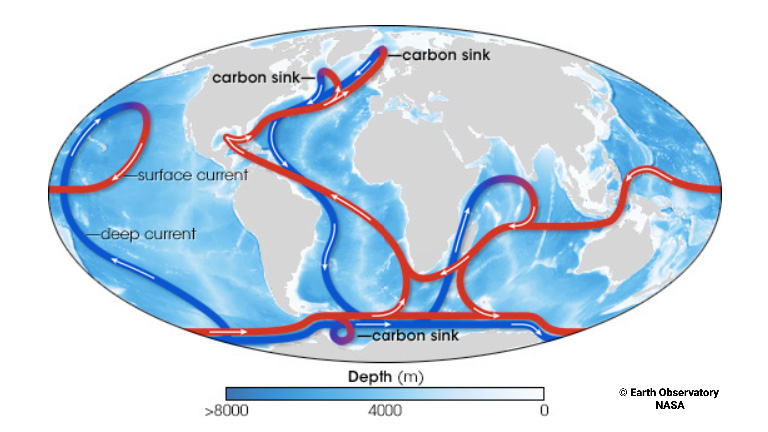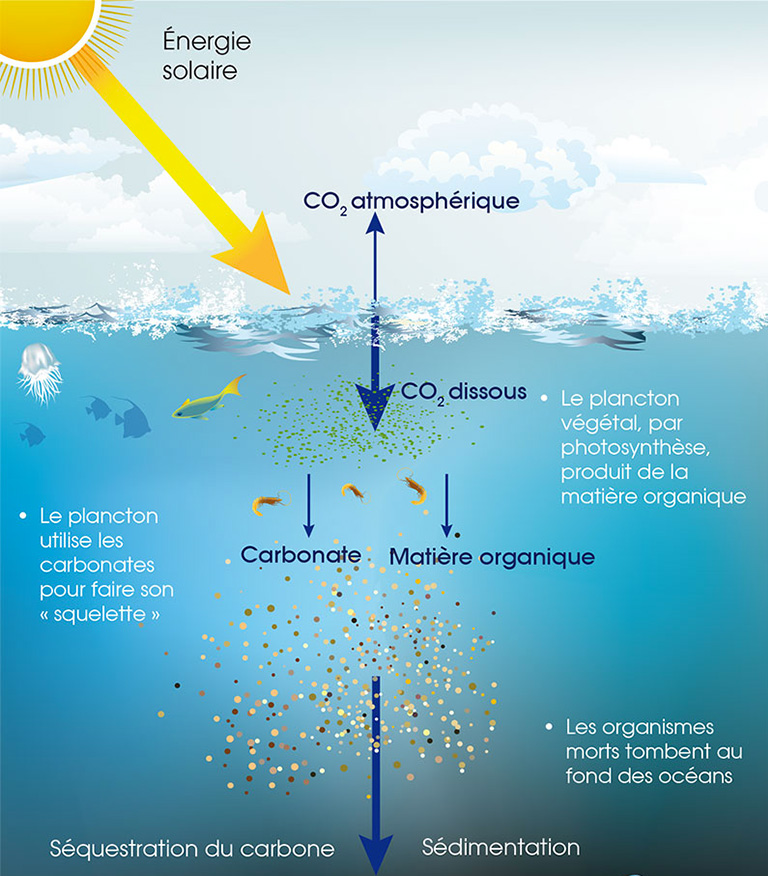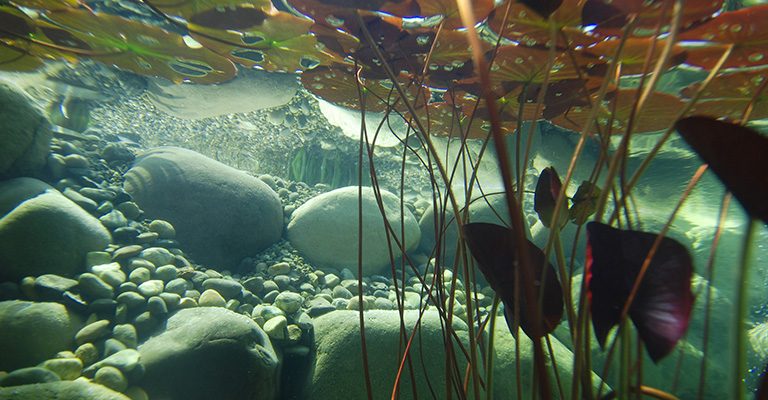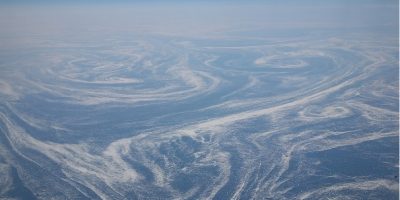The ocean is a climate regulator, mainly because it captures ⅓ of the carbon dioxide (CO2) emitted into the atmosphere each year. This phenomenon of “oceanic carbon pump” is due to a double process: a physical process and a biological process.
The physical process is related to the dissolution of carbon dioxide in water. At the surface between air and water, CO2 reacts with water molecules to form bicarbonate ions. These are dissolved and then carried away by cold, dense water – the dissolution of the gas is favoured in cold, high-latitude waters more than in warm, tropical waters. Through ocean currents, most of this dissolved carbon sinks with the cold, dense water to the sea floor. And it will remain buried there for hundreds of years!

The world’s oceans are connected by deep currents (blue lines) and surface currents (red). Carbon from the atmosphere enters the depths of the ocean in areas of deep water formation in the North Atlantic and off the Antarctic Peninsula. When deep currents rise to the surface, they can release “fossil” carbon dioxide that has been stored for centuries. Map by Robert Simmon, adapted from IPCC 2001 and Rahmstorf 2002 © Earth Observatory NASA
The biological process is linked to the phenomenon of photosynthesis. On the surface of the oceans and from water, sunlight and CO2, the plant plankton synthesises matter by releasing oxygen (O2). It therefore absorbs CO2 and transforms it into organic matter..
But some of this plankton dies and falls to the bottom of the sea, while the other part is ingested by marine organisms in the food chain, which in turn die and fall to the deep sea. Both the dissolved carbon and the carbon absorbed during photosynthesis are therefore stored in the deep sea. This is why our oceans are said to be “great natural carbon sinks”, essential to our human life.

Schematization of the operating principle of the biological carbon pump in the oceans. Source: Ocean Climate Platform, www.ocean-climate.org
As CO2 is the main greenhouse gas, the oceans are fully playing their role as moderators of global warming: it is estimated that they have already absorbed more than 25% of man-made CO2 emissions since 1950!
However, as the waters warm and global warming increases, the dissolution of CO2 becomes more difficult. Unabsorbed CO2 stagnates in the atmosphere, which only accelerates global warming. This is why oceanographic campaigns and research are so important today: it is essential to better understand the evolution and movements of the ocean in order to better understand tomorrow’s climate phenomena.


